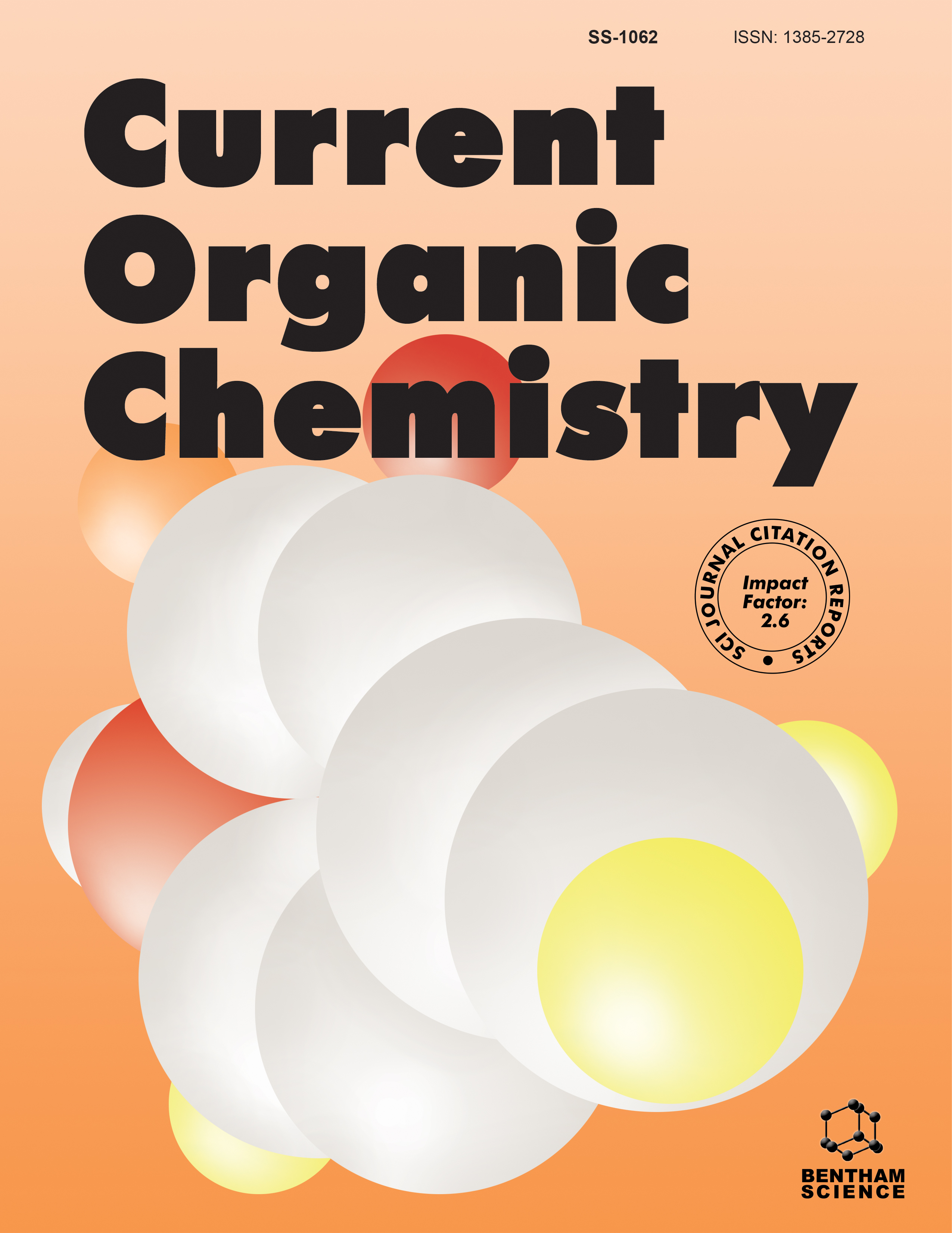- Home
- A-Z Publications
- Current Organic Chemistry
- Previous Issues
- Volume 21, Issue 25, 2017
Current Organic Chemistry - Volume 21, Issue 25, 2017
Volume 21, Issue 25, 2017
-
-
Dimroth Rearrangement-Old but not Outdated
More LessAuthors: Anna Krajczyk and Jerzy BoryskiBackground and Objective: It may seem that the reaction first performed over 120 years ago is an out of date subject on which everything has been said and there is nothing left to be discovered-but first impressions can be deceiving. Even of lately, the Dimroth rearrangement pops up here and there, sometimes chosen deliberately as a method of synthesis, but sometimes it is brought back to life in order to explain unexpect Read More
-
-
-
Recent Advances in Synthesis and Biological Activity of Modified Cap Analogs
More LessAuthors: Muthian Shanmugasundaram, Annamalai Senthilvelan and Anilkumar R. KoreThe recent explosion in mRNA cap analogs underscores the importance of mRNA as a powerful tool in the study of RNA metabolism and highlights the potential of targeting mRNA for the treatment of cancer, gene therapy, antiviral therapy and improvement of the localization of nuclease-targeting drugs. The chemically modified mRNA cap analogs consist of a unique cap structure, m7G[5']ppp[5']N (where N = G, A, C or U) Read More
-
-
-
Intramolecular Cyclization of N-Arylpropiolamides: A New Strategy for the Synthesis of Functionalized 2-Quinolones
More LessAuthors: Esmail Vessally, Mirzaagha Babazadeh, Khadijeh Didehban, Akram Hosseinian and Ladan EdjlaliThis review article is an attempt to highlight the most important contributions toward the synthesis of functionalized 2-quinolone derivatives from cyclization of N-arylpropiolamides with the emphasis on the mechanistic aspects of the reactions.
-
-
-
Catalytic Activity of Functionalized Spinels
More LessAuthors: Kalluri V.S. Ranganath, Melad Shaikh, Aanchal Sahu and Gaddipati SarvaniThe development of spinels as catalysts for various organic transformations has gained a considerable importance over the last decade. In this article, an overview is given about the use of spinels and functionalized spinels in heterogeneous catalysis. In particular, these can be either normal or inverse spinels and they can trigger catalytic reactions without modification, with modification, as core material and also decorated o Read More
-
-
-
Polyoxometalate-nano Gold Hybrid Mesostructured Catalyst for Green Cyclohexene Epoxidation
More LessAuthors: Umsa Jameel, Mingqiao Zhu, Xinzhi Chen and Zhangfa TongBackground: The design of a highly active catalyst is a key point in olefins epoxidation. Recently, polyoxometalates have received an increasing interest in selective oxidation of organic compounds. Their scope as nanoparticle carriers is of immense importance as the high anionic charge associated with them prevents sintering of the nanoparticles which is a major issue related to nanoparticle based catalysts thus increasi Read More
-
-
-
Amino-functional Silsesquioxanes (POSS)-Effective Glass Surface Modifiers in Solidphase Nucleic Acid Synthesis
More LessBranched amino functional polyoctahedral silsesquioxanes (POSS) were prepared by using different stoichiometric ratios of two olefins: allylamine and vinyltrimethoxysilane. Amino-rich CPG particles were produced by direct silanisation with amino-POSS silanes. The parameters of surface morphology (total volume and size of pores) of the obtained supports were determined by Brunauer-Emmett-Teller method. Results fro Read More
-
Volumes & issues
-
Volume 29 (2025)
-
Volume 28 (2024)
-
Volume 27 (2023)
-
Volume 26 (2022)
-
Volume 25 (2021)
-
Volume 24 (2020)
-
Volume 23 (2019)
-
Volume 22 (2018)
-
Volume 21 (2017)
-
Volume 20 (2016)
-
Volume 19 (2015)
-
Volume 18 (2014)
-
Volume 17 (2013)
-
Volume 16 (2012)
-
Volume 15 (2011)
-
Volume 14 (2010)
-
Volume 13 (2009)
-
Volume 12 (2008)
-
Volume 11 (2007)
-
Volume 10 (2006)
-
Volume 9 (2005)
-
Volume 8 (2004)
-
Volume 7 (2003)
-
Volume 6 (2002)
-
Volume 5 (2001)
-
Volume 4 (2000)
Most Read This Month
Article
content/journals/coc
Journal
10
5
false
en


